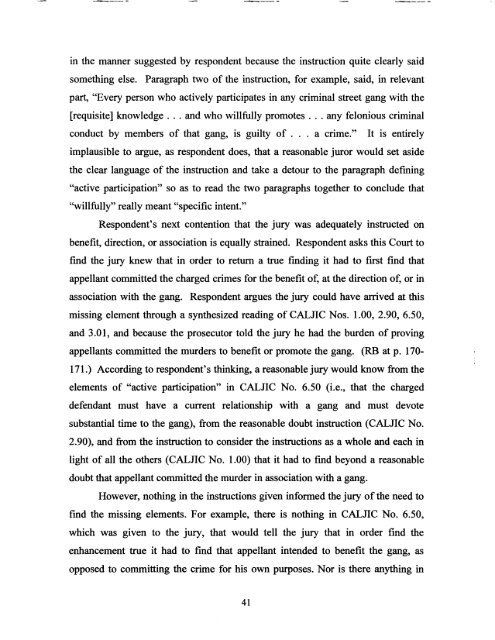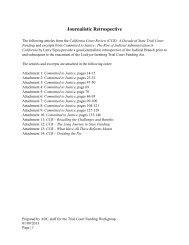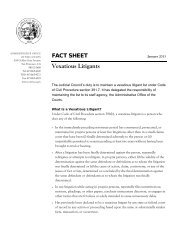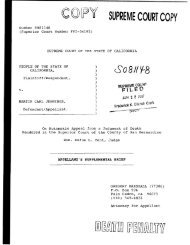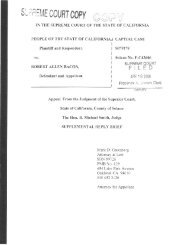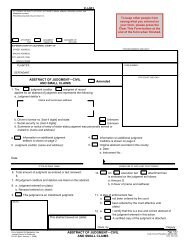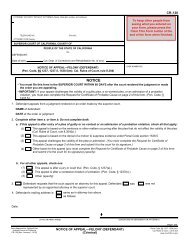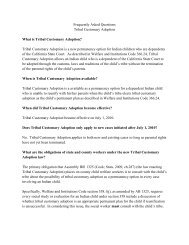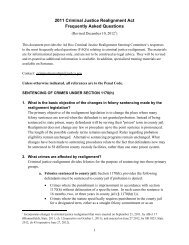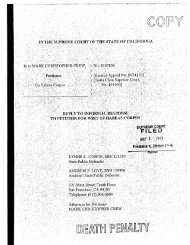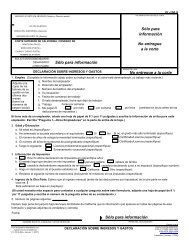Appellant, William Satele, Reply Brief - California Courts - State of ...
Appellant, William Satele, Reply Brief - California Courts - State of ...
Appellant, William Satele, Reply Brief - California Courts - State of ...
Create successful ePaper yourself
Turn your PDF publications into a flip-book with our unique Google optimized e-Paper software.
in the manner suggested by respondent because the instruction quite clearly said<br />
something else. Paragraph two <strong>of</strong> the instruction, for example, said, in relevant<br />
part, "Every person who actively participates in any criminal street gang with the<br />
[requisite] knowledge ... and who willfully promotes ... any felonious criminal<br />
conduct by members <strong>of</strong> that gang, is guilty <strong>of</strong> ... a crime." It is entirely<br />
implausible to argue, as respondent does, that a reasonable juror would set aside<br />
the clear language <strong>of</strong> the instruction and take a detour to the paragraph defining<br />
"active participation" so as to read the two paragraphs together to conclude that<br />
''willfully'' really meant "specific intent."<br />
Respondent's next contention that the jury was adequately instructed on<br />
benefit, direction, or association is equally strained. Respondent asks this Court to<br />
fmd the jury knew that in order to return a true fmding it had to first find that<br />
appellant committed the charged crimes for the benefit <strong>of</strong>, at the direction <strong>of</strong>, or in<br />
association with the gang. Respondent argues the jury could have arrived at this<br />
missing element through a synthesized reading <strong>of</strong> CALnC Nos. 1.00, 2.90, 6.50,<br />
and 3.01, and because the prosecutor told the jury he had the burden <strong>of</strong> proving<br />
appellants committed the murders to benefit or promote the gang. (RB at p. 170<br />
171.) According to respondent's thinking, a reasonable jury would know from the<br />
elements <strong>of</strong> "active participation" in CALnC No. 6.50 (i.e., that the charged<br />
defendant must have a current relationship with a gang and must devote<br />
substantial time to the gang), from the reasonable doubt instruction (CALnC No.<br />
2.90), and from the instruction to consider the instructions as a whole and each in<br />
light <strong>of</strong> all the others (CALnC No. 1.00) that it had to fmd beyond a reasonable<br />
doubt that appellant committed the murder in association with a gang.<br />
However, nothing in the instructions given informed the jury <strong>of</strong>the need to<br />
fmd the missing elements. For example, there is nothing in CALnc No. 6.50,<br />
which was given to the jury, that would tell the jury that in order find the<br />
enhancement true it had to find that appellant intended to benefit the gang, as<br />
opposed to committing the crime for his own purposes. Nor is there anything in<br />
41


